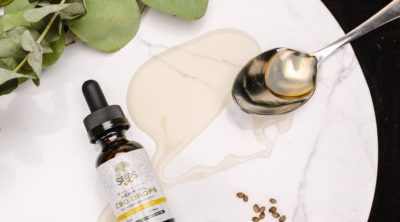
Elecampane is a perennial plant that has been used as a medicinal herb due to its anti-inflammatory and expectorant properties for ages. This HolisticZine write-up provides information on the medicinal uses and side effects of elecampane.
| Did You Know? There are several fables surrounding the origin of the elecampane plant. It is believed that Inula helenium, the Latin name of this plant is derived from the legend of the Helen of Troy. As per folklore, Helen was carrying a bouquet of elecampane when she was being abducted from Sparta. Another fable suggests that this plant sprung up at the place where Helen’s tears fell. |
Known by various names such as wild sunflower, scabwort, marchalan, horseheal, Xuan fu (Chinese name), elfwort, etc., elecampane is a herbaceous, perennial plant that is indigenous to southern and central regions of Europe and western Asia. However, it has been naturalized in parts of North America. Its botanical name is Inula helenium, and it belongs to the Asteraceae or the daisy family. The parts of the plant that are used in herbal infusions include its root, rhizome, and flowers.
It is believed that this plant was used by the Ancient Greeks and Romans for the treatment of conditions such as upset stomach, menstrual irregularities, dropsy (water retention), and sciatica. It was also used by the Anglo-Saxons for alleviating the symptoms of certain skin diseases. These days, herbalists mainly use it for the treatment of respiratory problems.
| Chemical Constituents and Properties of Elecampane The ingredients that are responsible for the therapeutic properties of this herb include: ❖ Volatile oils that contain sesquiterpene lactones such as alantolactone, isoalantolactone, etc. This herb possesses the following properties: ❖ Expectorant (helps cough up phlegm) Medicinal Uses ❖ Respiratory Ailments ❖ Gastrointestinal Ailments ❖ Effect on Blood Sugar This herb can be taken in the form of tea, liquid extract, or tincture. As far as the dosage is concerned, 1.5-3 g of rhizome/root can be taken thrice a day. Elecampane tea can be taken twice a day. To make this tea, 1.5-3 g of root can be added to 150 milliliters of boiling water. Let it steep for 5-10 minutes and strain. |
| Side Effects and Contraindications When taken in prescribed doses, this herb doesn’t cause untoward effects. However, it could cause certain side effects, if taken in large doses. The side effects might include: ❖ Vomiting This herb is contraindicated in the following cases: ❖ Pregnancy ❖ Allergy Though inulin doesn’t have a significant effect on the blood sugar levels, diabetics who are using elecampane in any form must monitor their blood sugar levels on a regular basis. Elecampane can interact with central nervous system depressants and sedatives, thereby causing drowsiness. Thus, people who are taking such drugs must avoid its use. |
It must be noted that there’s a lack of scientific data on the effectiveness of this herb in the treatment of the aforementioned conditions. Most of the data is based on animal studies and anecdotal evidence. Therefore, it is advisable to consult your healthcare provider before you start taking this herb.
Disclaimer: The information provided in this article is solely for educating the reader. It is not intended to be a substitute for the advice of a medical expert or an herbal practitioner.


